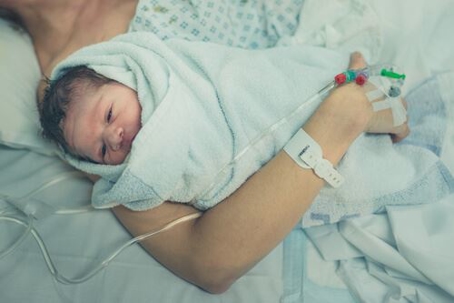Modern medicine has come a long way in ensuring the safety of mothers and newborns during pregnancy, labor, and delivery. However, it’s not always able to prevent poor outcomes, including complications resulting in injuries or deaths to mothers.
While maternal injuries, illnesses, and deaths arising from childbirth may stem from medical negligence or unavoidable causes (depending on the case), most hospitals and health care providers are keen to protect their reputations by ascribing such complications to factors outside of their control. Usually, that means blaming mothers and larger, “systemic” or regional problems.
According to a billing data analysis recently published USA Today, that prescription for blame may be nothing more than a misleading approach which conceals the true and troubling scope of maternal death and injury rates in America.
U.S. Leads Developed World in Maternal Childbirth Complication Rates
Although cases of maternal injuries and deaths arising from pregnancy and childbirth have and still do result in legitimate medical malpractice cases in which negligent health care providers are held accountable, hospitals have for years engaged in questionable practices which ultimately shift blame from their missteps and mistakes to problems they claim are beyond their control.
According to these providers, pre-existing medical conditions and poverty are the driving force of what’s made giving birth in America more dangerous than in any other developed nation in the world. However, as the USA Today investigation notes, it’s also tactic which shifts the narrative and focus away from the performance of doctors, nurses, and hospitals in maternity treatment – which is where we should all be looking.
One Story & Many Similar Stories
One case in particular identified by USA Today detailed the death of one mother whose blood pressure spiked after giving birth at a Louisiana hospital. That death, along with other deaths and several close calls at the same facility, the data suggests, simply cannot be explained away by pre-existing medical conditions and demographic-related issues.
Data, medical records, and civil lawsuits (i.e. birth injury and medical malpractice suits) obtained and reviewed by USA Today paint a different picture; one of a complicated mix of misdiagnoses, delays in delivering care, and failures to meet established standards. For example:
- The mother with dangerously high blood pressure did not receive immediate medical intervention as called for by national treatment guidelines.
- Another maternal death involving a mother who bled out after an emergency C-section was performed by physicians in training.
- A mother who displayed signs of an infection was tested by a team of trainee physicians using what supervisors later testified were questionable methods, including one test which was extremely painful, and another designed a condition that was exceedingly rare. The mother ultimately suffered gangrene, and required an amputation of her hands and her legs.
Complications and stories like these are unfortunately not uncommon, both at this particular hospital in New Orleans and many others nationwide. In fact, that Louisiana hospital was one of about 120 hospitals where moms suffered serious pregnancy- and birth-related complications at far higher rates than others.
The Numbers: A Problem that Provides an Opportunity for Change
Based on publicly available statistics and an examination of billing records for 7 million childbirths across 13 states, USA Today unearthed a much different picture about maternal childbirth complications than many hospitals and health care professionals have created. That includes:
- The 120 outlier hospitals saw mothers facing twice the risks of having to undergo procedures for hysterectomies, blood transfusions, seizures, strokes, and heart attacks, and other procedures indicating deliveries which turned deadly.
- Roughly 1 in 8 hospitals saw potentially deadly maternal complications occur at least twice as often as the national average (1.5%).
- Childbirth injury and death rates have been steadily increasing in the U.S. – each ear 700 mothers die, and roughly 50,000 suffer injuries.
- Studies into these alarming numbers have found that as much as half of maternal deaths and severe injuries could and should have been reduced in severity or prevented altogether with acceptable and reasonable medical care.
- Nationwide, black mothers die from childbirth-related complications at nearly 4x the rate of white mothers, and they suffer serious complications stemming from pregnancy and delivery about twice as often, though the nation’s worst hospitals for complication rates saw mothers from all walks of life being affected.
- Trainee physicians are repeatedly cited as participants in deadly deliveries.
The numbers, which you can learn more about in-depth here, are in all ways alarming, and they stand to serve several purposes:
- Improving maternal care – Harsh realities are unfortunately some of the most effective catalysts behind needed changes, as they provide an opportunity for unearthing the true nature of serious and systemic problems, and can function as a road map for improving maternal care provided by U.S. practitioners and hospitals.
- Changing the narrative – Cold, hard, and often tragic facts can be powerful tools for changing a misleading narrative perpetuated by hospitals with objectives more attuned to reputation and profits than patient safety. Even amid the journalistic investigation, one hospital told USA Today it serves a “medically vulnerable” population, which makes the analysis “unsound” and inaccurate to their particular problems. Specifically, the hospital blamed issues with the current health care system (high costs), delayed compliance with medical treatment or non-compliance entirely, limited coordination of care, poor health, and high poverty rates. They say those things are the realities of their community. For advocates, however, they show a more troublesome rhetoric that shifts blame, takes attention away from how to improve care, and ultimately, limits the opportunity to improve how we talk about care and childbirth in these communities.
- Increasing transparency and accurate reporting – Childbirth / pregnancy account for the 2nd leading reason for hospitalization in America, but the U.S. government permits Hospitals to use lax reporting requirements as a means for keeping childbirth complication rates private. Increasing transparency and improving reporting requirements could provide at least some impetus for igniting methods and policies that better address poor numbers, and give hospitals less ability to point to other factors as an excuse for why they can’t do better.
- Showing the totality of the problem – At most hospitals, childbirth complications occurred at rates approximately under 1.5%, but USA Today’s analysis showed roughly 1 in 8 hospitals saw potentially deadly maternal complications occur at least twice as often. Those hospitals were providers of all types in locations across vastly different states treating a diverse patient populations, from major metro areas in placed where demographic concerns are real problems and barriers to better health care to community hospitals in local towns and suburbs where births are common. Among the hospitals with the highest complication rates, far more than poor women and black mothers were affected – showing the true scope of the problem as one which requires improvements across the board and the nation.
- Highlighting the underlying issues – There are of course a number of factors underlying complications and poor outcomes in childbirth, and highlighting those issues is a sensible way to improve or change them entirely. That includes the fact that trainee doctors are cited it many deadly deliveries, whether they are performing the wrong tests, being too slow to identify time-sensitive complications, or making medication mistakes or surgical errors. The data begs for a re-evaluation of programs where hospitals have residency and training programs caring for mothers and newborns, as well as other identified underlying issues.
The Becker Law Firm: Our Role in the Fight for Justice After Birth Injuries
The Becker Law Firm has seen a lot change in the field of medicine since we were first established in 1980. Over the years, we’ve handled cases and have worked with real families who suffered unimaginable harms and losses due to many different types of preventable birth injuries and acts of medical negligence. We’ve also used our evaluation of data, expert analyses, collaborative working relationships with medical experts, and studies like this to drive our efforts in protecting the rights of victims seeking justice and compensation for their damages – as well as all mothers, newborns, and families seeking care which may very well make them the next statistic when the status quo is left in place, and true problems unaddressed.
As birth injury lawyers with record-setting results, we know it takes more than skill and experience alone to make a difference. Prevailing for clients and prevailing for all patients by holding negligent hospitals and health care providers accountable demands the passion and grit of truly talented and driven lawyers. Those lawyers are the ones who comprise our team, and they’re the reason why we’ve been able to make real differences for our clients and our communities over so many years.
If you have a question regarding a potential birth injury or medical malpractice lawsuit anywhere in the state of Ohio, The Becker Law Firm is here to help. Contact us to speak with a lawyer.


